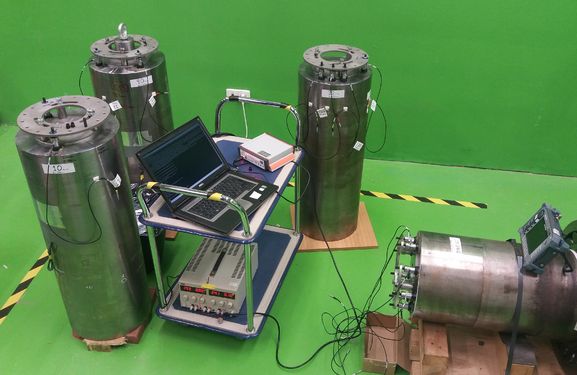A predictive maintenance system that offers the use of 96% of the useful life of the low speed shaft
The durability of the low speed shafts of wind turbines, just as that of many other components subject to cyclic loads, is limited to the action of fatigue mechanisms.Occasionally, unforeseen events occur in the design phase (corrosion processes, assembly damage, geometric errors, etc.) causing fatigue life to be reduced dramatically.
In many wind turbines the replacement of the shafts is not a viable alternative for economic reasons. Instead, predictive maintenance measures that coexist with the cracks are implemented, and only shafts that are badly damaged are replaced.
As a result of the breakage of two low speed shafts, as a consequence of the action of a fretting-fatigue mechanism, in 2009 TECNALIA took over the control of the structural integrity of the shafts of 100 wind turbines. Its work consisted in implementing a predictive maintenance procedure based on manual inspections.
Given the budget cuts that affect the maintenance of wind turbines, we launched the LEO (Life Extension in eOlics) project. This on-board system works in an autonomous and self-managed way in the three tasks of predictive maintenance: ultrasound inspection, evaluation of results and issuing an alert in case of risk for structural integrity.
As a multisectoral and multidisciplinary centre, we have work teams with the complementary technological skills necessary for the development of a complex asset such as LEO. This development has been carried out based on knowledge and experience in six technological areas: fault analysis (RCA), structural integrity, ultrasound physics, electronics development, software development and installation engineering.
At the end of 2017, after three years of work in which it went from a TRL1 product to a TRL9 one, the installation of 100 LEO devices was carried out. In March 2018, the project was finalised after demonstrating in the field the main functionality of the equipment: a crack was detected in one of the shafts. Six months after this first detection, the wind turbine continues to operate thanks to LEO, and the crack evolves as expected while awaiting the replacement of the shaft.
LEO is fully configurable and allows you to schedule alerts according to the client’s needs and the characteristics of the monitoring systems. In the current version, a warning dynamics has been implemented with three levels of alarm, allowing the first two phases to rearm the machine and preventing it in the final phase to eliminate risk of breakage.
There are numerous improvements that LEO introduces as an on-board predictive maintenance system:
- Minimum use of 96% of the useful life of the shaft.
- As the crack progresses the system informs of the need to manage the stock and the scheduling of the stop.
- Automatic inspections without stopping the wind turbine.
- Small annual maintenance cost to be made by the operator.
- Equipped with self-diagnosis and measurement assurance systems, it ignores non-relevant cracks, thereby eliminating false positives.
- Allows remote monitoring.
- Programmable system and adaptable to different pathologies and models.
- Fast return on investment by eliminating manual inspections and stops.
LEO allows you to maximise the life of damaged shafts based on predictions of damage evolution in a safe way. Its use is not ruled out in other applications such as railway or naval, where shafts are also critical components.

Phase 1
START OF CRACK
- Detection of an incipient crack
- First alarm alerting of the existence of a crack
- Reassembly of the machine by authorised personnel is possible
Phase 2
ALERT
- Detection of a crack that allows between one and two months of remaining useful life, under standard service conditions
- Second alarm, due to relevant but not dangerous crack
- Reassembly of the machine by authorised personnel is possible
Phase 3
ALERT
- After the first detection, the system will control the progress of the crack until it consumes 95% of the life of the shaft
- Once this point is reached, the system issues a last alarm through its connection to the machine’s safety chain
- The system does not allow the reassembly and start-up of the wind turbine

